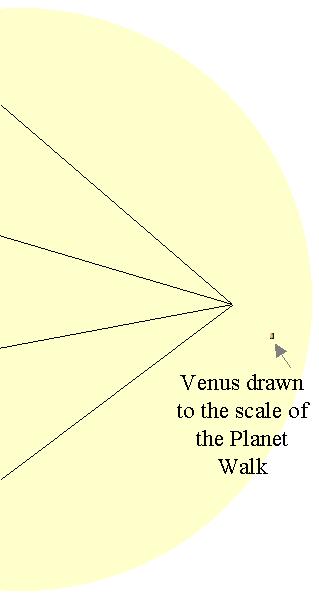
 |
The atmosphere of Venus is carbon dioxide (96%) and nitrogen (3.5%), with small amounts of carbon monoxide, argon, sulfur dioxide, and water vapor (less than 1%). There are several layers of clouds many kilometers thick composed of sulfuric acid (battery acid) droplets. These clouds completely obscure our view of the surface. The pressure of Venus' atmosphere at the surface is 90 times that of the Earth's atmosphere (about the same as the pressure at a depth of 1/2 mile underwater). This dense atmosphere produces a strong greenhouse effect that raises Venus' surface temperature to over 500 degrees Celsius (hot enough to melt lead). Venus' surface is actually hotter than Mercury's despite being nearly twice as far from the Sun.
While the surface of Venus is not directly observable, radar images have allowed us to visualize the terrain. There are no small craters on Venus. It seems that small meteoroids burn up in Venus' dense atmosphere before reaching the surface. Craters on Venus seem to come in bunches indicating that the large meteoroids that do reach the surface usually break up in the atmosphere.
| To Planet Walk Home Page |
To Prof. Dorneman's Home Page | To MCCC Home Page |